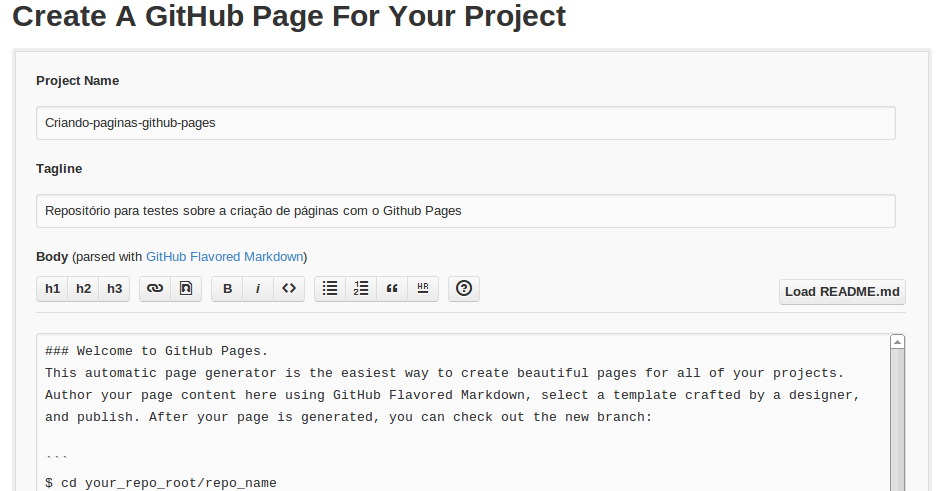
Where do you want to create your new web site? (hit Enter).The quickstart will ask you various questions, which you can answer in turn. Here are some specific answers you should give: Pelican provides an excellent quickstart command. You should see that you are using the -src repository. Then, clone the output repository as a git submodule (substitute your Github username): git submodule add output

Then change directory to the site: cd ghpages Set up the blog with Pelicanĭouble check that you’re working in the source git repository using: git remote -v
GITHUB PAGES INSTALL
On Fedora, this is a very very simple command: sudo dnf install python-pelicanĬlone the source repository you created: git clone ghpages (Use your Github username for these repositories.) The -src repository will hold the sources of your blog and the repository will contain the output HTML files Pelican generates. To add the output directory as a submodule, initialize it with a README file. To create your Github user page, log in to Github and create two new repositories, username. You’ll need to be familiar with using the git command to follow the steps in this article. Now that you’ve seen the value of Pelican, let’s get started building a site. There are hundreds available on the web already, including responsive and bootstrap based. Pelican blogs are completely themeable, as you can see above this particular theme is called Chunk. Pelican may be a text-based blogging tool but it can produce beautiful blogs: By combining Pelican with Github Pages, you can have a reliable and attractive blog site for your projects.

Github Pages allows users to store page content in a git repository along with their code. Github, arguably the world’s most popular open source code hosting service, offers a simple, elegant website solution for projects it hosts. Pelican supports feeds, external analytics tools, and can import from WordPress or other feeds. Like other blog software, you can make both timed posts and static pages. The files can be in reStructured Text or Markdown formats, which are both simple to learn. Pelican is a utility that lets you create beautiful weblogs using just text files.


 0 kommentar(er)
0 kommentar(er)
